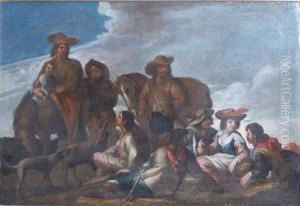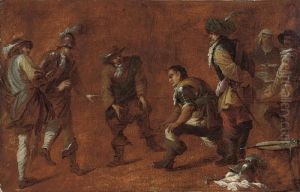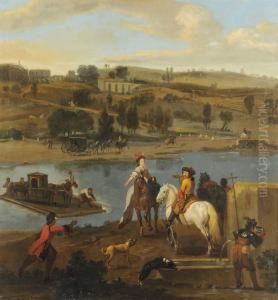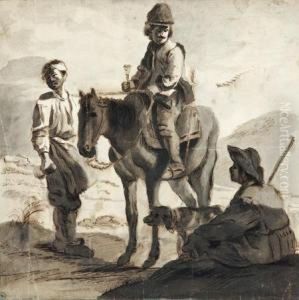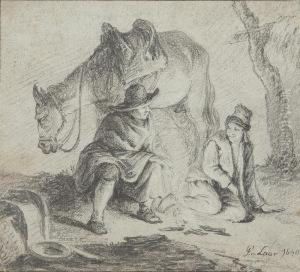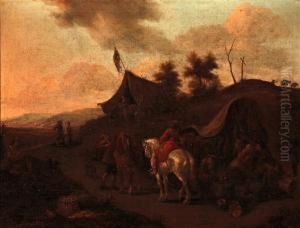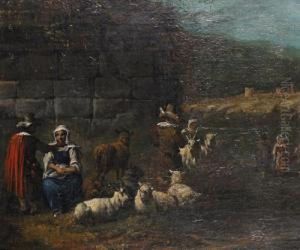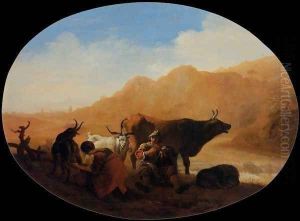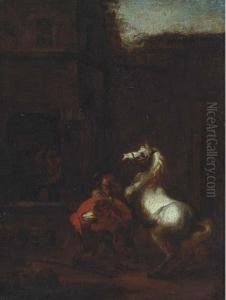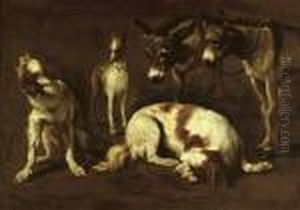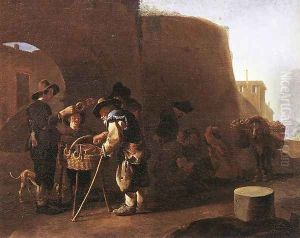Pieter Van Laer (BAMBOCCIO) Paintings
Pieter van Laer, also known as Il Bamboccio, was a Dutch painter and printmaker in etching. He was born in Haarlem, Netherlands in 1599 and was an influential figure in the Baroque period, known for his innovative and unconventional approach to genre painting. Van Laer's moniker, 'Il Bamboccio', which means 'ugly doll' or 'puppet' in Italian, was a reference to his physical appearance, as he was reportedly not a tall man and had a hunchback. Despite this, he achieved significant artistic success.
Pieter van Laer's early artistic training took place in Haarlem, where he learned from influential artists of the Dutch Golden Age. His early work was influenced by the Haarlem school of painting, which was known for its attention to detail and realistic representation of the Dutch landscape and daily life. In 1625, van Laer moved to Rome, which was a hub for artists at the time. There, he became a member of the Bentvueghels, an association of mainly Dutch and Flemish artists working in Rome, and it was here that he was given his nickname.
In Rome, van Laer's work began to evolve as he became deeply influenced by the Roman Campagna, the surrounding countryside, and its inhabitants. He developed a genre known as 'bambocciate', an Italian term derived from his nickname, which depicted low-life subjects, rural scenes, and small-scale figures in a realistic and often humorous manner. These works were a departure from the grand historical and mythological paintings that were popular at the time and focused instead on the mundane activities of common people.
Van Laer's bambocciate were characterized by their lively compositions, keen observation of daily life, and a distinctive use of chiaroscuro to enhance the dramatic effect. His work was innovative in that it combined landscape and genre painting, setting a precedent for other artists, including his followers who were known as the 'Bamboccianti'. The Bamboccianti continued to develop the bambocciate style, which had a significant impact on the genre of landscape and genre painting in Italy and Northern Europe.
Pieter van Laer's influence extended beyond his lifetime. His works inspired a number of Dutch and Flemish artists who had also settled in Rome, and his approach to genre painting contributed to the development of the Dutch Realist School. Despite his success, details about his later life are scarce, and he is believed to have returned to Haarlem, where he died in 1642. Today, Pieter van Laer is remembered for his unique contribution to Baroque art, and his paintings can be found in many prestigious art collections and museums around the world.



